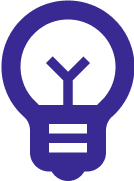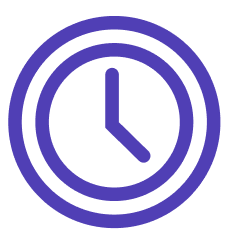Neurofeedback
Neurofeedback is a safe, non-invasive way to train the brain to be more relaxed, calm, alert, and focused. Sensors are placed on the scalp and they record brainwave activity. This information is transferred to the computer. When the software recognizes the client becoming more relaxed, calm, alert, and focused, the software rewards the client with video and sound. As soon as the client loses focus or becomes anxious, the video and sound stop playing. The client practices how to be more focused, calm, and relaxed during the sessions.

Reasons to Consider Neurofeedback
You may want to consider Neurofeedback Training if you are struggling with symptoms of inattention and lack of focus, anxiousness, depressed mood, issues with memory and brain fog, stress and burnout, and trouble sleeping Neurofeedback may be right for you.

Benefits of Neurofeedback:
A DIFFERENT APPROACH
What if therapy and medication are not making a difference? This is where Neurofeedback can shine. Neurofeedback is able to look at the brain holistically by recording, analyzing, and creating personalized training programs based on your brainwave patterns to improve your quality of life.
SAFE AND NON-INVASIVE
Our equipment is able to record your brainwave activity in real-time, in a safe and non-invasive manner. This information is transferred to the computer where it is analyzed by complex, state-of-the-art software which provides feedback to the client in a safe and non-invasive way.
SIDE EFFECT FREE SUPPORT
Medication may work at the start, but as your body gets used to it you may have to increase dosages or switch medications. The side-effects of one drug may need to be supported by another (e.g ADHD medications may cause anxiousness, so you may need to start a round of antianxiety medication which may have its own set of side-effects). Neurofeedback is a great option for those uncertain about trying medication and their possible side-effects.
LONG-LASTING RESULTS
The brain has the innate ability to rewire and change itself when presented with learning opportunities. This principle is known as Neuroplasticity. Once sufficient learning is done, the brain can find a more optimal way of functioning and these results are generally long-lasting.
Neuroplasticity
Neuroplasticity is the idea that the brain can change and rewire itself based on learning opportunities. Neurofeedback is a learning opportunity for the brain to guide it towards optimal functioning.
Operant Conditioning
Operant Conditioning is the idea that if you reward the behaviour you want to see you increase the frequency of that behaviour occurring. Neurofeedback rewards healthy and optimal brainwave activity and increases the frequency of this behaviour occurring.
Self-Regulation
Self-regulation is the ability to adjust our thinking, attention, emotions, behaviour, and bodies so we can be in a calm, focused, alert state when learning and responding to our environment. Neurofeedback gives us the opportunity to practice to enter, recognize, and maintain a desired mental state.
Board Certification:
Usually in a Neurofeedback Clinic, the Doctoral Level Clinician is Board Certified in Neurofeedback (BCN Accreditation) and he/she trains their staff to uphold the standards from the Board Certification International Alliance (BCIA). Not only is Dr. Muller Board Certified in Neurofeedback, both Directors are Neuropotential Clinics are Board Certified in Neurofeedback.
Research Experience:
Our Clinical Director is a published author in Neurofeedback Research. Shane Dutt was the first author of the featured Article LORETA Neurofeedback Combined with Biofeedback as a Treatment for Agenesis of the Corpus Callosum: A Single Case Study which was published in Biofeedback journal in 2016. This additional experience is crucial in ensuring you are getting the best Neurofeedback plan possible.
Technology and Software:
Neurofeedback is a very technical intervention that requires state-of-the-art hardware and software to ensure you are getting the most value from the experience. Most clinics use a wet-cap system that requires gel and paste to be applied at 19 different sites on the scalp. This can be uncomfortable for some and you have to go home to take a shower after your session. At Neuropotential Clinics, we have invested in wireless, dry-electrode systems that do not require any gel or paste to set up and execute your treatment plan. Our clients say the convenience and comfort really helps them get more out of their sessions with less frustration.
Google Reviews:
Most regulatory colleges do not allow for testimonials as there is no way to verify if they are authentic. Google Reviews allows clients to post on a third party website to ensure each opinion is trusted and true. We are proud to say Neuropotential Clinics is one of the highest rated clinics in Canada.
Training Time Per Session:
To ensure you are getting the most out of your sessions, the amount of training time you get per session is crucial. Wet-electrode systems can take between 15 to 20 minutes to set up, which only allows for 15-20 to minutes of training, followed by a 5 to 10 minute procedure to remove gel and paste from your scalp before you leave.
With our Dry-Electrode systems we can reduce set up time to 5 to 7 minutes, allowing for 35-40 minutes for training, and a 10-second clean up process for the client. That is almost double the training than a wet-cap system for a 50 minute session. This reduction in setup and clean up time allows you to get more training down within the hour while still maintaining safety standards.

How do we measure progress?
Updated QEEG assessment recordings allow us to map and monitor changes that are occurring as sessions progress, but we also rely upon subjective reporting from our clients. We look at symptom severity (how extreme or severe), frequency (how often, how many times per day), and duration (how long do these symptoms last) and their effect on quality of life.

We start off with a Clinical Intake Interview. This is where we review background, medical, and developmental history, your symptoms and their severity, major life events and do our best to conceptualize the uniqueness of your case.

The next step is a Quantitative Electroencephalogram(QEEG) baseline recording. Just as a stethoscope is placed on your chest to listen to your heartbeat, electrodes are placed on your scalp to record your brainwave activity.

Using the information from your clinical intake interview, baseline recording, and intake package we put the pieces together to create a tailored program to suit your needs.

Finally, we debrief the results, help you understand the different statistics and brainwave patterns involved in your program, as well as help answer your questions before you can begin training.
Frequently Asked Questions
See some common questions and answers below, or call us at (416) 398-9991.
-
WHY NOT USE MEDICATION?
Initially, drug therapies may be necessary as a short-term solution to reduce the severity of symptoms. Medication may not be a viable long-term solution for some. If medication is discontinued, symptoms reappear because no learning has occurred. Due to the numerous side-effects associated with the medication, non-pharmacological options may be a better option. As training progresses and symptomatology improves, medication may need to be reduced or removed completely.
-
DOES NEUROFEEDBACK TRAINING HURT?
Neurofeedback training is a non-invasive treatment modality and does not hurt. Electrodes are placed on to the head and ears in a comfortable manner. Clients may feel fatigued at the end of a session because Neurofeedback is essentially a workout for your brain. The trainee is practicing self-regulation, and they may feel tired after a session.
-
IF NEUROFEEDBACK TRAINING WORKS SO WELL, WHY HAVEN’T I HEARD OF IT?
The most common form of intervention for mental health conditions is medication. The pharmaceutical industry has the money and power to advertise where Neurofeedback does not. This is changing as more research is being published to advocate for the efficacy of Neurofeedback. See http://www.isnr.org/ and http://www.aapb.org/ for more information.
-
ARE THERE AN RISKS/SIDE EFFECTS ASSOCIATED WITH TRAINING?
Neurofeedback is a non-invasive treatment modality that focuses on teaching individuals to regulate their electrical brainwave activity. No research to date has reported any negative side-effects from Neurofeedback training. Neurofeedback training programs are designed so that only positive, optimal brainwave patterns are reinforced. No negative or unwanted brainwave patterns can be created in this way. As the training progresses, the trainee may notice that the side-effects of their medication are becoming more prevalent (if they are on medications). This indicates that their brain functioning is becoming optimal.
-
CAN NEUROFEEDBACK TRAINING HELP ME IF I DON’T HAVE A DIAGNOSED CONDITION?
Neurofeedback and Biofeedback techniques are also used in Peak Performance settings to help improve an individual’s level of calm, focus, relax, and alert. This type of training is used for athletes, executives, and students who aim to achieve greater success in their respective disciplines.
-
WHAT AGE RANGES ARE THE BEST CANDIDATES FOR NEUROFEEDBACK TRAINING?
Neurofeedback relies on concept of neuroplasticity, which states that the brain can alter its function and reorganize itself in response to learning and other events. Neuroplasticity tends to decrease as you age, so younger clients tend to progress the quickest. This is why it is easier to learn a language or skill early in life as opposed to when you are older. The most common age ranges for training are 8-24 years old. Older clients (55 years of age and over) may need a few more sessions to achieve certain training goals.
-
ARE THE RESULTS FROM NEUROFEEDBACK TRAINING PERMANENT?
Follow-up studies have been conducted for children who received Neurofeedback training and they indicate that their training progress was sustained years after training was completed in most cases.
Please note that services are not covered under OHIP, but may be covered by insurance or extended health care benefits.









